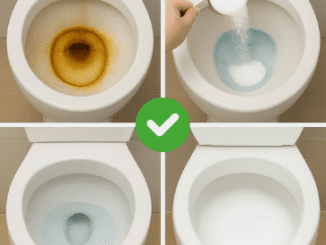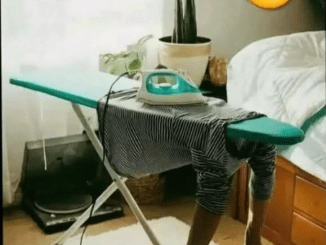Most of us never think twice about rinsing our sinuses or swimming in lakes. But sometimes, nature hides a danger so microscopic and fast-acting that it’s both terrifying and tragic. That’s exactly what happened to a 71-year-old woman in Texas, who recently lost her life to a rare, aggressive infection caused by Naegleria fowleri—commonly known as the brain-eating amoeba.
The Centers for Disease Control and Prevention (CDC) has issued a strong advisory following this incident, and it’s one everyone should take seriously—especially if you use neti pots, sinus rinses, or spend time in warm freshwater.
What Happened in Texas?

The woman, who was staying at an RV campground in Texas, used tap water in a nasal rinse device—an act many people do regularly. But just four days later, she began experiencing severe symptoms: headache, fever, confusion, and eventually, loss of balance and consciousness.
Within eight days, she passed away. Doctors later confirmed the cause of death was Primary Amebic Meningoencephalitis (PAM)—a rare but nearly always fatal brain infection caused by Naegleria fowleri.
What Is Naegleria Fowleri?
Let’s get to know the culprit.
Naegleria fowleri is a single-celled amoeba found in warm freshwater environments—think lakes, hot springs, rivers, and even improperly maintained swimming pools. It becomes a deadly invader when it enters the body through the nose, especially when water is forcefully pushed up the nasal passage during rinsing or recreational water activities.
Once inside the nose, the amoeba travels to the brain, where it destroys brain tissue. The result? A disease so aggressive that it’s earned the nickname “brain-eating amoeba.”
Primary Amebic Meningoencephalitis (PAM): Rare But Ruthless
Now, here’s where things get chilling.
PAM is incredibly rare. According to the CDC, only about three people per year in the United States are diagnosed with it. But here’s the kicker: the fatality rate is over 97%. Out of 157 documented U.S. infections from 1962 to 2022, only four people have survived.
Video :Texas woman dies from brain-eating amoeba traced to RV water tank
And the timeline is brutal. Symptoms usually appear within 1 to 12 days of exposure, and death typically occurs within 5 to 18 days. Early signs include:
- Severe headache
- Fever
- Nausea and vomiting
- Confusion
- Seizures
- Hallucinations
- Coma
How Does This Happen? Common Mistakes That Can Be Fatal
This tragic case in Texas highlights a common and deadly mistake: using unsterile tap water for nasal rinses.
Many people assume that tap water is “clean enough.” And while it may be safe to drink (thanks to stomach acid), it’s not safe for direct nasal contact—especially when forced deep into the sinuses.
Why? Tap water can contain low levels of bacteria, amoebas, and other pathogens that your stomach can handle but your brain cannot.
What went wrong? In this case, the woman unknowingly used tap water contaminated with Naegleria fowleri in her nasal irrigation device. The amoeba entered her nose, bypassed her body’s natural defenses, and made its way straight to her brain.
CDC Guidelines: How to Protect Yourself

The CDC is crystal clear in its guidance:
Never use tap water for sinus rinsing unless it has been properly treated.
Here’s what you should do instead:
- Use distilled or sterile water (sold in stores)
- Boil tap water for at least 1 minute (or 3 minutes at higher altitudes), then let it cool
- Use a water filter with an absolute pore size of 1 micron or smaller
- Never use untreated tap water in neti pots, squeeze bottles, or other nasal rinse systems
Where Are You Most at Risk?
While PAM is rare, it’s important to understand where you’re more likely to encounter Naegleria fowleri:
- Warm freshwater lakes and rivers, especially in southern U.S. states during summer
- Hot springs or geothermal water sources
- Swimming pools or water parks that aren’t properly chlorinated
- Tap water used for nasal rinsing, especially in older or untreated municipal systems
The amoeba does not survive in saltwater, and you cannot catch it from drinking contaminated water or from person-to-person contact.
Early Detection Is Tough—But Crucial
The real problem? By the time symptoms appear, the infection has often progressed too far. PAM mimics bacterial meningitis, making it hard to diagnose in time.
There have been rare cases of survival, mostly thanks to a new experimental drug called miltefosine. But even then, early intervention is the key—and early diagnosis is extremely difficult.
Let’s Be Clear: This Is Preventable
The terrifying part of this story isn’t just the fatality—it’s that it could have been avoided.
Video : Texas woman dies from brain-eating amoeba after using tap water in nasal rinse
We’re talking about a completely preventable death, caused by something as routine as using a neti pot. All it would’ve taken was using distilled or boiled water instead of tap.
That’s why awareness is everything.
Conclusion: One Simple Step Can Save Lives
This isn’t about panic. It’s about being informed and cautious.
You don’t need to fear swimming or nasal rinses. But you do need to follow the CDC’s water safety guidelines and understand how Naegleria fowleri infects people.
Whether you’re a sinus rinse user, a lake lover, or a parent sending kids to summer camp, knowing the risks—and the solutions—can literally save a life.
So next time you reach for a neti pot or dive into a lake, ask yourself: Am I being smart with water safety? It could be the most important health question you ever ask.
Stay aware. Stay safe. And don’t give brain-eating amoebas the chance to become a silent killer.


